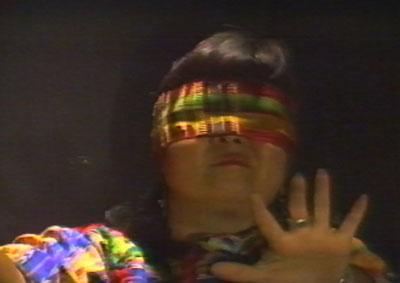Directed by Don Amis
Ujamii Uhuru Schule (Swahili for Community Freedom School) is the day-in-the-life portrait of an Afrocentric primary learning academy located in South Los Angeles. Focusing on the virtues of the three Rs—Respect, Righteousness and Revolution—the curriculum also teaches the importance of cultural values and self-defense. Shot in high contrast to emulate the color spectrum of the Pan-African flag, Don Amis punctuates the documentary with African chants, syncopated drums and poignant narration by the school’s faculty. Learn, baby, learn. —Tony Best
Producer: Don Amis. Cinematographer: Don Amis. Editor: Don Amis.
Digital video transferred from 16mm, color, 9 min.






 Mobile Navigation
Mobile Navigation

